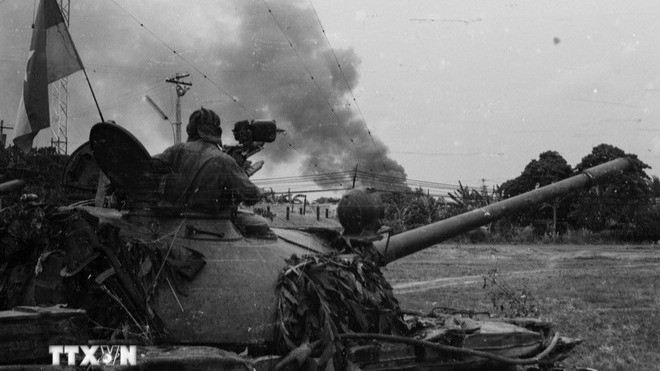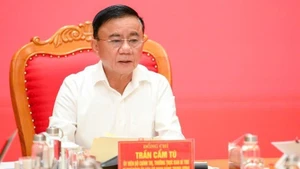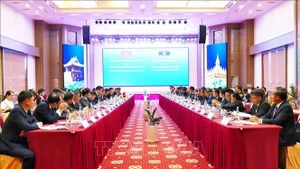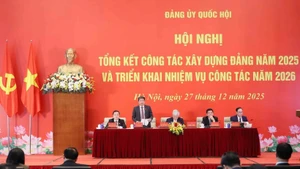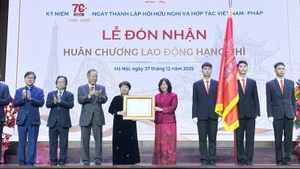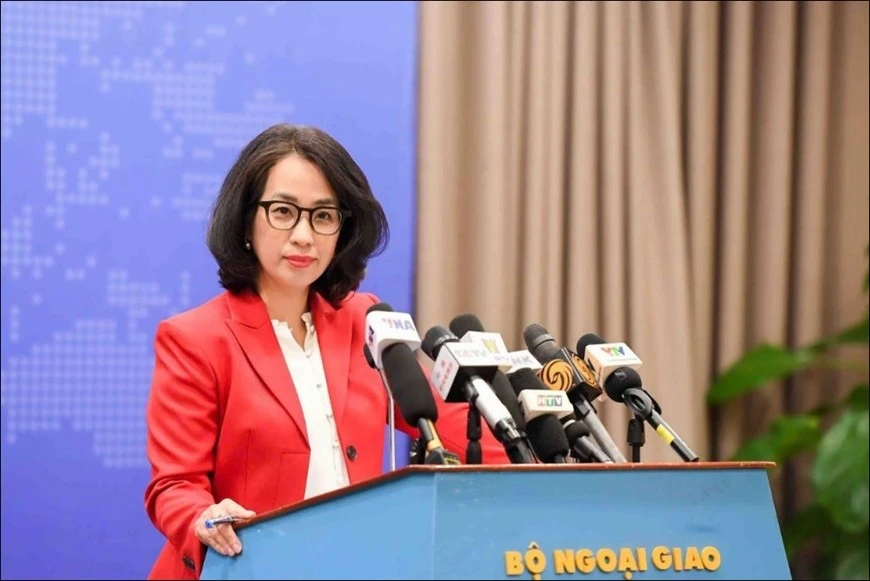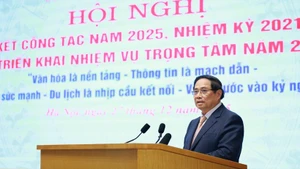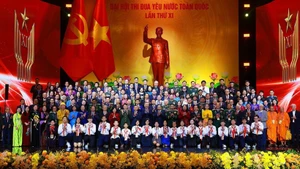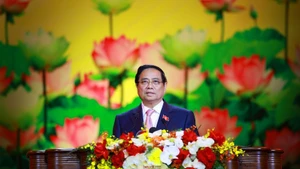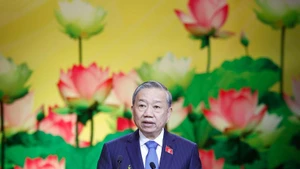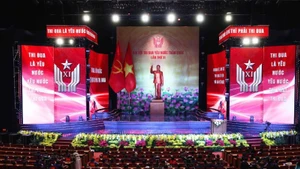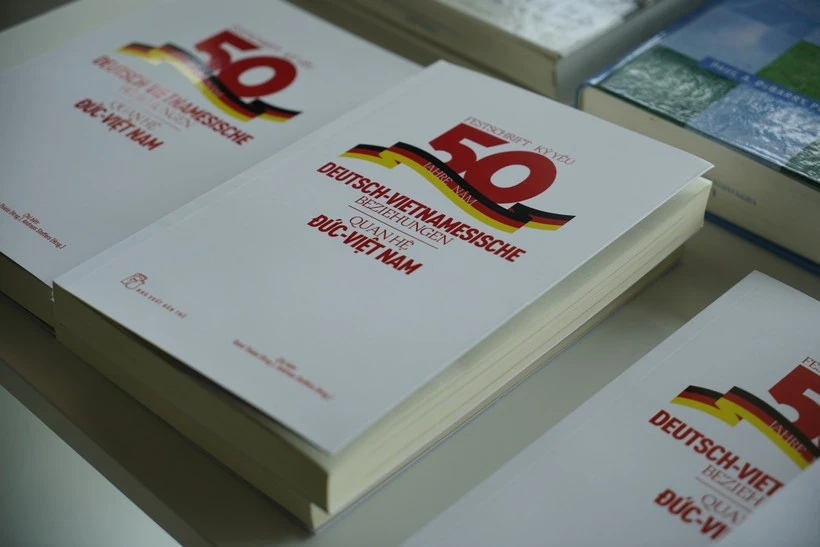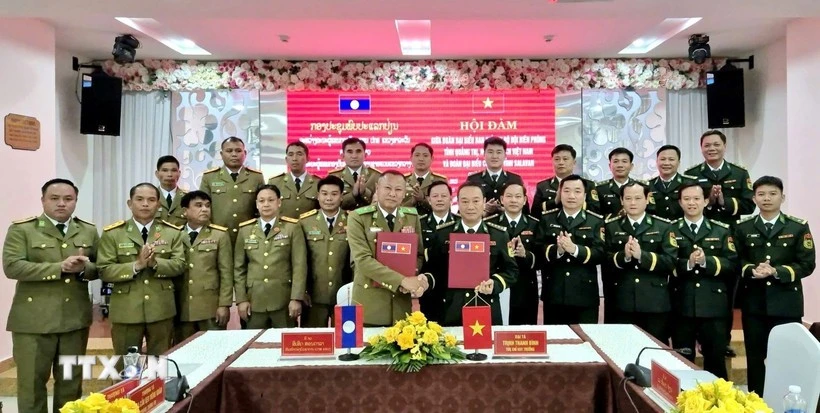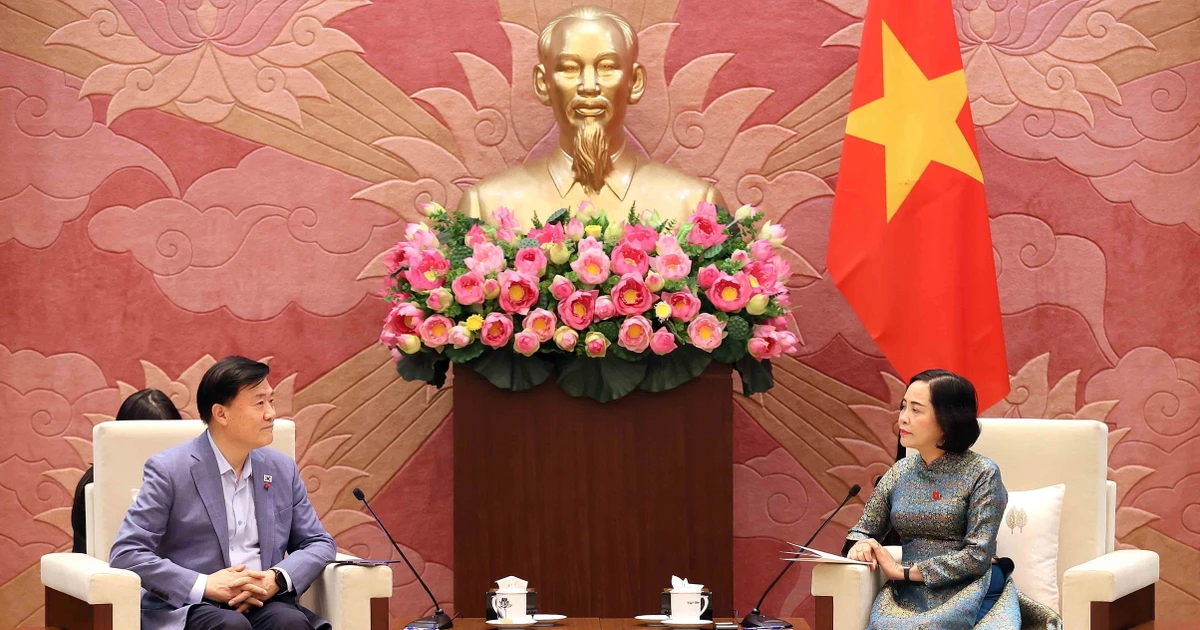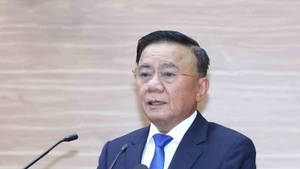The notice emphasised: “...The rapid development of the revolution in the southern region presents many new requirements that need to be addressed. The victories in the south are stirring up enthusiastic revolutionary spirit throughout the country. It is necessary to quickly and widely communicate news of victory, and to conduct widespread political mobilisation throughout the Party, the army and the people, helping everyone to clearly understand the significance of the victory and their responsibilities in the new situation, contributing their greatest efforts to the nation’s common revolutionary cause.”
On April 10, the Command of the Saigon-Gia Dinh Liberation Campaign met to discuss and agree on the leadership, command methods, and operational plans for the campaign.
The command determined that forces and weapons must be concentrated to harness comprehensive strength and create an overwhelming advantage to quickly destroy and disintegrate all remaining enemy troops, crushing the Saigon army from central to local levels, liberating Saigon-Gia Dinh, and creating conditions for liberating the southern region. During the campaign, it was necessary to closely coordinate between attacks and mass uprisings, but military offensives must take precedence and play the decisive role.
That same morning, continuing the Xuan Loc-Long Khanh Campaign, our forces continued to attack Xuan Loc, capturing the airport, inflicting heavy casualties on the Saigon army’s 3rd Regiment of the 18th Division, and attacking the 1st Airborne Brigade that had just landed at Tan Phong. The enemy had to deploy an additional Rangers regiment to reinforce Xuan Loc. We changed our tactics and surrounded Xuan Loc while attacking reinforcements.
In the 9th Military Region, because Xuan Loc had not yet been captured, on April 10, the Southern Regional Command directed the 9th Military Region to cancel plans to attack the airport and Can Tho City, so the Military Region ordered the 4th Division to withdraw. However, the unit was pursued by the enemy and suffered casualties, including the loss of an entire reconnaissance platoon.
On the same day, the eastern forces advanced to Nha Trang. Also on April 10, the leadership and command of the 232nd Corps arrived at the Saigon-Gia Dinh Liberation Campaign Command Headquarters to receive their mission.
In the 8th Military Region, from April 10-12, the Regional Committee’s Standing Board and Regional Military Commission met to thoroughly grasp the tasks assigned by superiors, discussed organisational plans, assigned responsibilities for implementing the general offensive-general uprising plan, reached high consensus and deeply understood the three tasks assigned by superiors:
- Strategic division: completely severing Route 4 and the Cho Gao Canal.
- Opening one attack front into southern Saigon, capturing the National Police Headquarters (1 of 5 major targets of the campaign).
- Self-liberation of the entire region.
The Regional Committee’s Standing Board and Regional Military Commission determined that “this is an urgent and heavy task, with some unforeseen missions (such as attacking Saigon), but it is also an honour and great responsibility to directly participate in the liberation of Saigon.”
On April 10, the Naval Command dispatched 3 transport vessels 673, 674, and 675 (from the 125th Regiment) from Hai Phong to Da Nang to prepare for liberating islands in the Truong Sa (Spratly) Archipelago that were occupied by Saigon troops.
On the same day, all forces of the 99th Bridge Regiment of the 473rd Engineering Division under the Truong Son Command advanced eastward, securing several bridges on Route 1 to Da Nang and the Cau Lau, Ba Ren, An Tan, and Ke Xuyen bridges using Bailey equipment and steel beams captured from the enemy, ensuring our main forces could rapidly advance toward liberating Saigon.
In the northern rear area, the Central Support Council urgently deployed its work. People from the Northwest and Northeast regions had sent petitions to the central government requesting suspension of transportation of goods and food to their localities, to concentrate timely support for the Saigon liberation campaign. Factories and enterprises also mobilised 30-50% of their personnel to participate in serving the battlefield.
